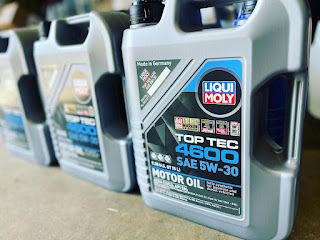Why The BMW Franchise's Oil Promo Is Bad For Your Car by CarHavn

We know you have been getting those emails from the BMW franchise peddling their $225 oil service for 3 years (3 years!). This is why it’s bad for you. 1. The catch in this promo is 3-years of CBS (Condition-Based Servicing) dictated maintenance. The condition-based system programmed in BMWs is terrible. It recommends oil service for far too long an interval, generally one year or 10,000 miles. That's insane! You should be doing it once every six months for 5000 miles. How do we know? Because we have seen cars that have followed CBS to the T and have so much sludge inside. We have taken oil samples of oil at 5,000 miles (we'll be glad to show you) - and they're disgusting. No way oil can last more than 5,000 miles. 2. You know BMW doesn’t make oil, right? They just bottle somebody else’s product. Whose? Your guess is as good as anybody's. That's why it's cheap - it's a rebrand. Us, on the other hand, use only top-notch LiquiMoly products, a very well known ...
